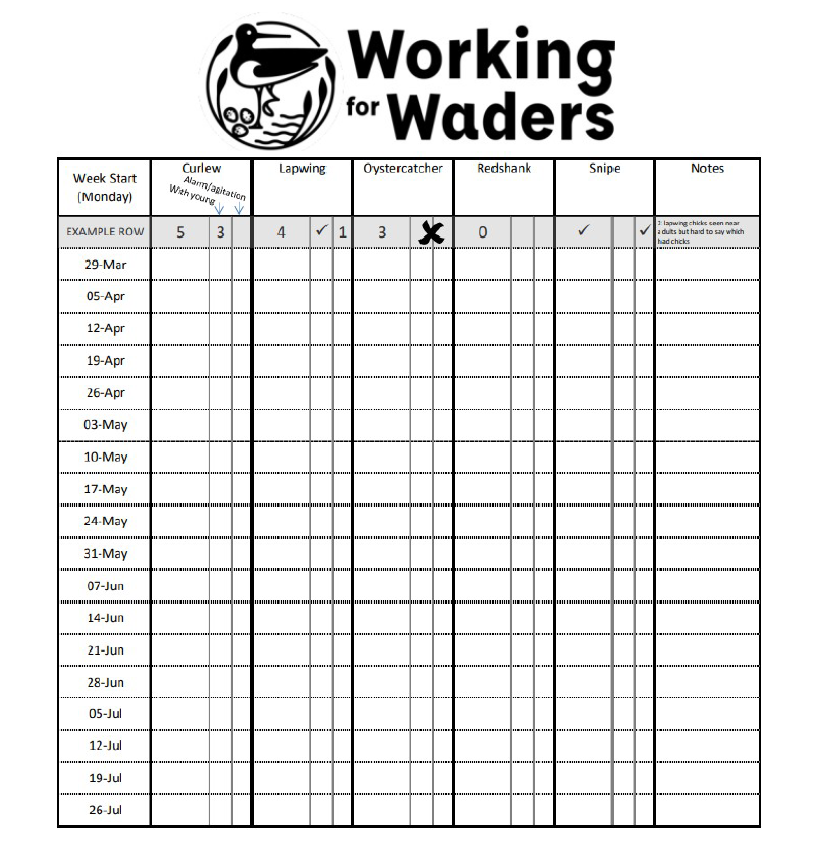Surveying Farmland Wading Birds - a Practical Guide
Download a pdf copy of this Practical Guide
We know that farmland wading birds are declining due to national ‘citizen science’ surveys, such as bird atlases and the annual Breeding Bird Survey. However, these do not provide a detailed picture of what is going on at a farm scale, which is essential for well targeted conservation measures.
Why should I survey waders on my farm?
Monitoring breeding waders on your farm enables you to track changes from year to year. This enables you to answer key questions such as:
- Are wader numbers changing over time on my farm?
- Are waders responding positively to agri-environment management?
- Which parts of your farm are most important for waders?
You may intuitively know the answers to these questions, but collecting and recording data in a consistent way means that this knowledge is not lost over time. It also helps make a stronger case for public funding for wader conservation and demonstrates the commitment of farmers to wader conservation. Sharing results among a group of neighbouring farmers can support landscape-scale conservation efforts.
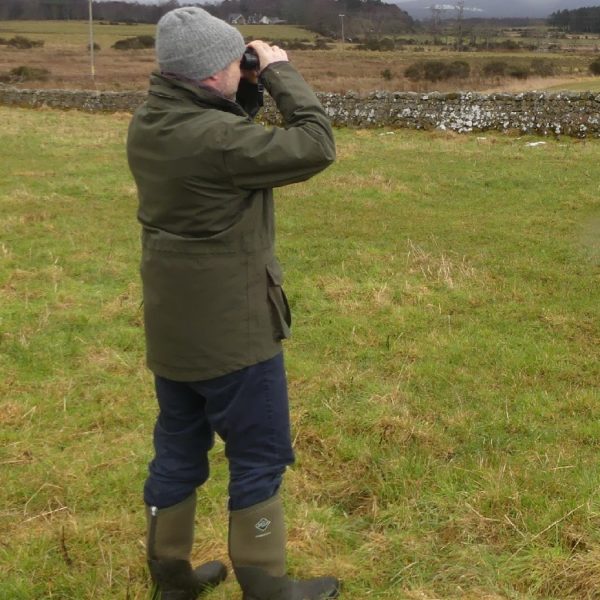
Who should survey waders on my farm?
Waders are generally quite easy to see and identify, making them ideal for farmers to survey themselves. The ‘Building and Benefiting Biodiversity’ individual wader species guides provide further information on the species and how to identify them. A pair of binoculars may be useful but not essential.
Farmers have many demands on their time, so for more detailed surveys it may sometimes be easier to ask a local birdwatcher or other enthusiast to help out. In some areas, co-ordinated surveys are carried out by local wader project teams.
How should I survey waders on my farm?
There are several methods that can be used. All can provide valuable information, ranging from simple presence or absence records, peak counts of each species or more detailed assessments of numbers of territories and even measures of breeding success.
How should I survey waders on my farm?
This simple survey method has been developed by the ‘Working for Waders’ partnership with busy farmers in mind.
- Record which wader species you see on the farm each week from the end of March to the end of July, as you go about your daily work.
- Ideally also record the minimum number of each species that were present on the farm each week.
- Record zero counts if the species is not present in a particular week.
- Add value by recording whether the birds are with young or agitated/alarm calling (indicators of breeding)
- Record if eggs or newly fledged young were seen.
- A simple recording sheet can be filled in and emailed to waders@bto.org to collate results.
Estimating number of pairs present
Oystercatcher and Curlew
A pair is counted as:
- two birds close together
- single bird displaying
- single bird seen on its own
- nest or brood seen with no adults
Use the maximum from any visit as the pair count for the year.
Lapwing
The number of pairs is taken to be half the maximum count of individuals seen between mid-April and late May.
Snipe
The maximum number of drumming or chipping (singing) birds recorded across the three visits is taken to be the number of pairs.
Redshank
The number of pairs is taken as the average number of individuals seen across all visits.
“O’Brien and Smith” method
This method can provide an estimate of the number of pairs or territories of each species and more specific information about the distribution of birds around the farm. It requires dedicated survey visits on at least three occasions during the breeding season.
- First visit – mid-April-early May
- Second visit – mid-late May
- Third visit – end of May-mid-June
- Ideally visit within 3 hours of dawn. Snipe in particular are more difficult to detect away from dawn and dusk.
- Walk through each field and try to approach all parts of the field to within 100 metres
- Scan ahead with binoculars to record birds before they are disturbed by you
- Record the number of each species you see in each field and mark on a map if possible
- If birds fly out of the field mark these movements with an arrow on the map to reduce the risk of double-counting later on.
“Brown and Shepherd” method
This method is better for use on large rough grazing areas. It requires at least two survey visits during the breeding season.
- First visit – early April – mid-May
- Second visit – mid-May to late June
- Visit during the daytime (0830-1800)
- Walk through each field at a constant rate (c.1 minute per hectare)
- Approach all parts of the survey area to within 100 metres
- Record each observation on a map for each visit, showing the number of birds and any evidence of breeding activity.
Breeding activity is indicated by:
- Displaying or singing
- Territorial disputes between birds
- Alarm calls
- Nests, eggs or young chicks
Observations of individual birds more than 500 metres apart are considered to come from separate pairs.
At the end of the season, combine the maps from the two visits to produce a map of breeding territories.
A modified version of the Brown and Shepherd method, requiring three visits (timed as for the O’Brien and Smith method) but relaxing the requirement to cover all areas to within 100m and at a constant survey rate has been developed by the BTO. This has been successfully tested by gamekeepers who used the method on their normal rounds of checking traps (Jarret et al. 2017).
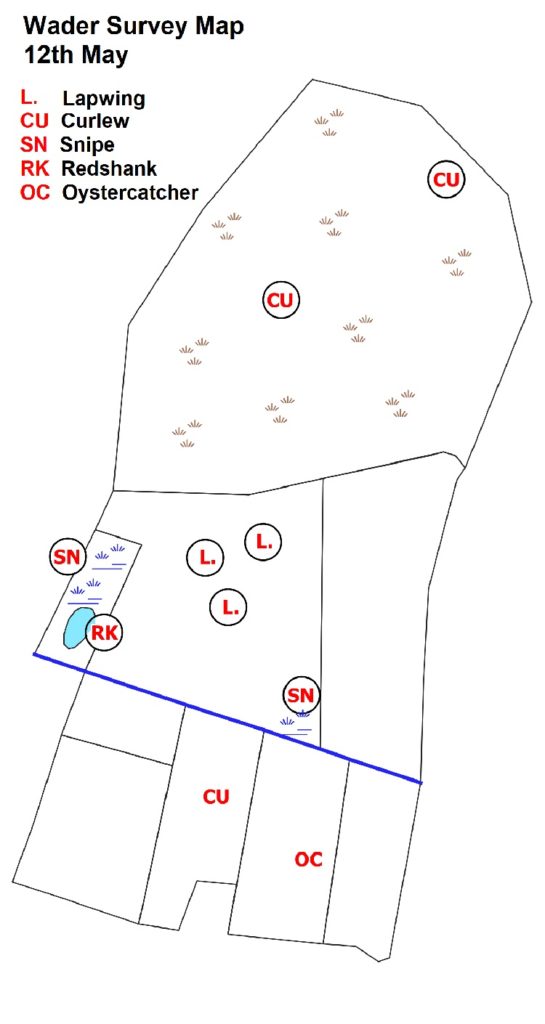
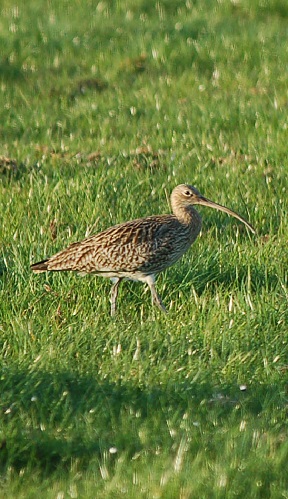
Helpful Hints
These tips may help you better interpret your survey results.
- Song flights are primarily carried out by the male, so two doing this in close proximity are likely to represent two pairs (particularly useful for Lapwings, which can nest close to each other).
- Flocks of waders are often present at the start and end of the breeding season. It is still useful to count them as they give an idea of the wider local population. However, keep records of flock counts separate from estimates of breeding pairs.
- Some individuals do not attempt to breed -this can be quite a high proportion in species like Oystercatcher. Small groups of feeding birds may not be breeding in the current year.
- Some waders (Curlews in particular) may fly from the nest site to feed in favoured fields some distance away. Even though they may not be nesting in such fields, it is still useful to record these sightings as these favoured feeding sites may be just as important for the survival of the local population as the nesting fields.
Measuring breeding productivity
The main reason for wader declines is poor productivity—too few young are fledging to offset adult mortality. Adult waders are long-lived and typically need to produce 0.6 young per pair to maintain a stable population. In other words, 5 pairs of Lapwing or Curlew on your farm will need to produce at least 3 fledged young per year to avoid declines, and more to enable population recovery and expansion. Poor productivity in one year can be offset by a better year so it is the average over a few years that matters. Similarly, areas of poor productivity may have stable populations if there is immigration from nearby areas of higher productivity. Attempting to measure the productivity of waders on your farm may help inform the need for more local conservation efforts.
A simple measure of breeding success can be determined during the later survey visits carried out under one of the previously described survey methods. Adults with chicks will often give loud alarm calls and noisy distraction displays, even if the chicks can’t be seen. By noting the presence of chicks, alarm calls or distraction displays, it should be possible to estimate what percentage of the pairs that were present early in the breeding season have produced young. If it is possible to count the chicks seen, this will give a more detailed productivity figure, although it is still likely to be a fairly rough estimate. If you record this information over a number of weeks using the ‘little and often’ method, it may be possible to track changes in the number of broods and pinpoint when chicks are lost.
If post-breeding flocks of waders gather on the farm towards the end of the season, it may be possible to estimate the proportion of juvenile birds in the flock, although this may also include other birds from surrounding areas. The plumage of juvenile Lapwings and Oystercatchers usually has a scaled appearance, while young curlews usually have shorter bills than the adult. Ideally at least a quarter of the birds in a flock should be juvenile to demonstrate good breeding success.
Nest monitoring
Monitoring nests can provide useful information about the factors affecting productivity. However, it can also increase the risk of disturbance and can attract predators towards nests, so care must be taken (visit bto.org and search for NRS Code of Conduct).
It is relatively easy to locate Lapwing and Oystercatcher nests, but less so for Curlew, Redshank and Snipe.
- Observe from a distance or visit nests every few days during incubation to monitor progress.
- Inspect eggshell fragments to determine hatching, predation or trampling.
- The use of remote camera traps or miniature nest cameras can help to determine causes of failure.
- Temperature loggers in nests can help determine cause of predation events (night time predation is mostly by mammals).
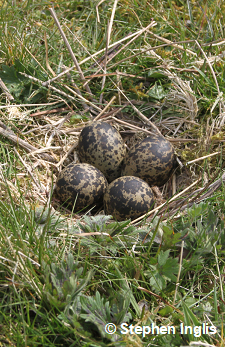
Further Information
workingforwaders.com bto.org rspb.org.uk curlewcountry.org wadertales.wordpress.com
Jarret, D., Calladine, J., Wernham, C. & Wilson, M. (2017). Monitoring Breeding Waders in Wensleydale: trialling surveys carried out by farmers and gamekeepers. BTO Research Report No. 703
Gilbert, G., Gibbons, D.W., & Evans, J. (1998). Bird Monitoring Methods: A Manual of Techniques for UK Key Species. RSPB
Download a pdf copy of this Practical Guide
Sign up to the FAS newsletter
Receive updates on news, events and publications from Scotland’s Farm Advisory Service

